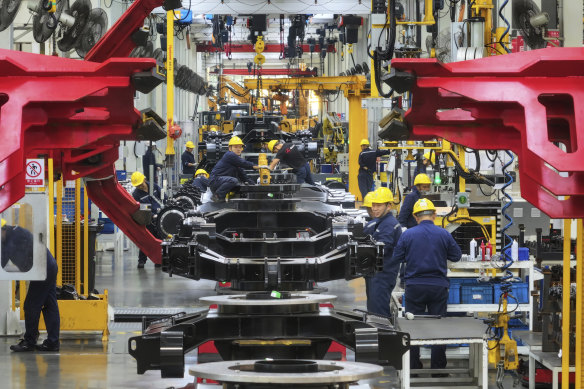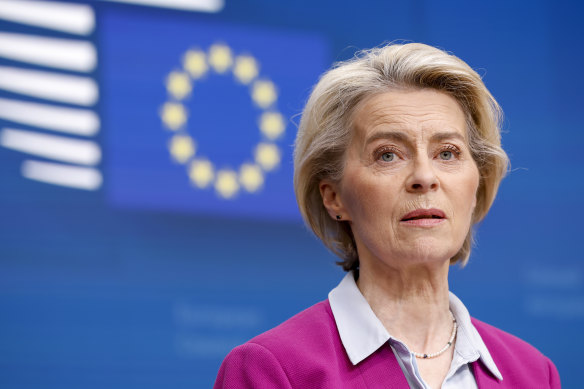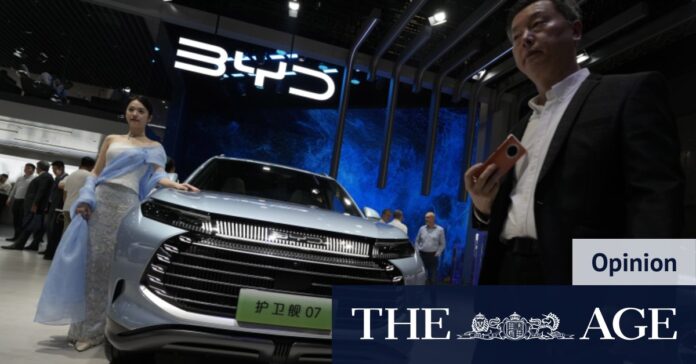[ad_1]
France has responded to the rapid growth of imports of Chinese EVs by redesigning its own consumer incentives scheme to preference vehicles made in Europe over those manufactured in China, which previously were absorbing about a third of all the subsidies.
The French scheme’s eligibility criteria points to a potential vulnerability for Chinese manufacturers more broadly because they include the carbon emitted during the manufacturing process. China’s industrial sector is still heavily reliant on coal-fired generation.
In effect, for EVs, France has pre-empted to some degree Europe’s carbon border adjustment mechanism that the EU launched last year but which doesn’t start to impose the tax on the embedded carbon (in an initially limited range of the most carbon-intensive imports) until 2026.
Other European economies with big auto industries might be tempted to follow suit, although Germany’s dilemma is that China is both a big market for its own industry and a manufacturing base for its own companies.
In the US, a combination of the high tariff rates Donald Trump imposed on imports from China, which wiped out China’s cost advantage, and Joe Biden’s incentives for domestic EV manufacturing and purchases (and, in some regions, additional state-funded incentives) have largely kept the Chinese manufacturers out of the market.
Last December the US also excluded EVs with batteries or critical minerals sourced from China from receiving the federal subsidies of up to $US7500 ($11,600).
Loading
China is responding to the over-capacity within its EV manufacturing sector by vowing to take “forceful measures” to deal with the establishment of new EV projects by local government authorities and enterprises.
Rounds of price cutting within the domestic market last year and the weaker demand offshore (where margins are much more attractive than those in the domestic market) might by themselves help force some less efficient capacity to exit the market.
China has hundreds of EV manufacturers. It seems like almost every large industrial group added an EV subsidiary – even China Evergrande created one – to take advantage of the generous incentives that were on offer from the federal and local governments.
For many of the companies their primary interest was in the tax credits, not sales of EVs, which explains the thousands of earlier model EVs decaying unsold in vast lots in the fringes of China’s major industrial cities.

China is confronting a glut of production that is causing alarm in Europe, its key market for EV exports.Credit: AP
In a sense, the EV sector is following the path of many of the sectors China has targeted as part of its national economic development strategies.
China identified EVs as a sector of strategic interest in the early 2000s, when it realised that Western auto companies’ dominance of internal combustion engines and Japan’s dominance of hybrids gave them a lead too substantial for its own immature industry to challenge.
So it decided to take a leap into the future and get ahead of the established industry by investing in EVs and their supply chain, the most significant components of which were critical minerals and battery technologies.
It was a whole-of-government approach, with central and local government incentives for the manufacturers, access to cheap land, financing and critical minerals, consumer incentives and procurement policies that saw government bus and car fleets required to be early adopters to drive scale.
China’s dominance of the critical minerals vital for EVs, its lead in battery technologies and the scale of its domestic market means that, if allowed to compete freely, it would almost certainly overwhelm domestic EV manufacturers elsewhere.
It is a wasteful but successful recipe; one used earlier to create China’s dominance of solar energy manufacturing.
It attracts massive-over investment and excess capacity but leverages China’s dominance of raw materials, their processing, its low-cost structures and its authoritarian political system to create strategic industries with global competitive advantages.
Once the sector has established itself, the authorities gradually scale back the incentives and eventually withdraw them completely to winnow out the strong companies from the weak, a plan that in the EV sector’s case was pushed into the second half of this decade by the weaknesses within the domestic economy.
The EU and US could be called out for being hypocritical for complaining about China’s EV (or solar) subsidies when they have their own incentives schemes and (particularly in the US) protectionist tariffs in place.

EU’s president, Ursula von der Leyen, upset Beijing when she said the global auto industry was being overrun by cheap Chinese EVs with prices kept “artificially low by huge state subsidies.”Credit: AP
Beijing’s whole-of-state and state-directed approach, however, with its layers of subsidies and concessions and co-operation with suppliers and access to national research and development resources (R&D has been the key component of China’s five-year plans and the EV sector’s success) isn’t something that would be replicable in the West’s market economies.
China’s dominance of the critical minerals vital for EVs, its lead in battery technologies and the scale of its domestic market means that, if allowed to compete freely, it would almost certainly overwhelm domestic EV manufacturers elsewhere.
Western policymakers are scrambling to fast-track their own EV sectors, with a mix of incentives and protectionist measures that, while distorting global trade even more than it is already distorted by trade wars and protectionism, might blunt some of China’s competitive advantages.
Loading
They are doing everything they can to ensure China can’t compete freely and, they would argue, unfairly.
In the near term, the impact of the massive over-capacity within China’s EV sector will, if the growth in offshore demand for EVs, remains subdued, force a painful rationalisation of the sector.
That is, however, a phase that China seems to have accepted is an unavoidable one if it is to realise its long-term ambitions.
[ad_2]
Source link


